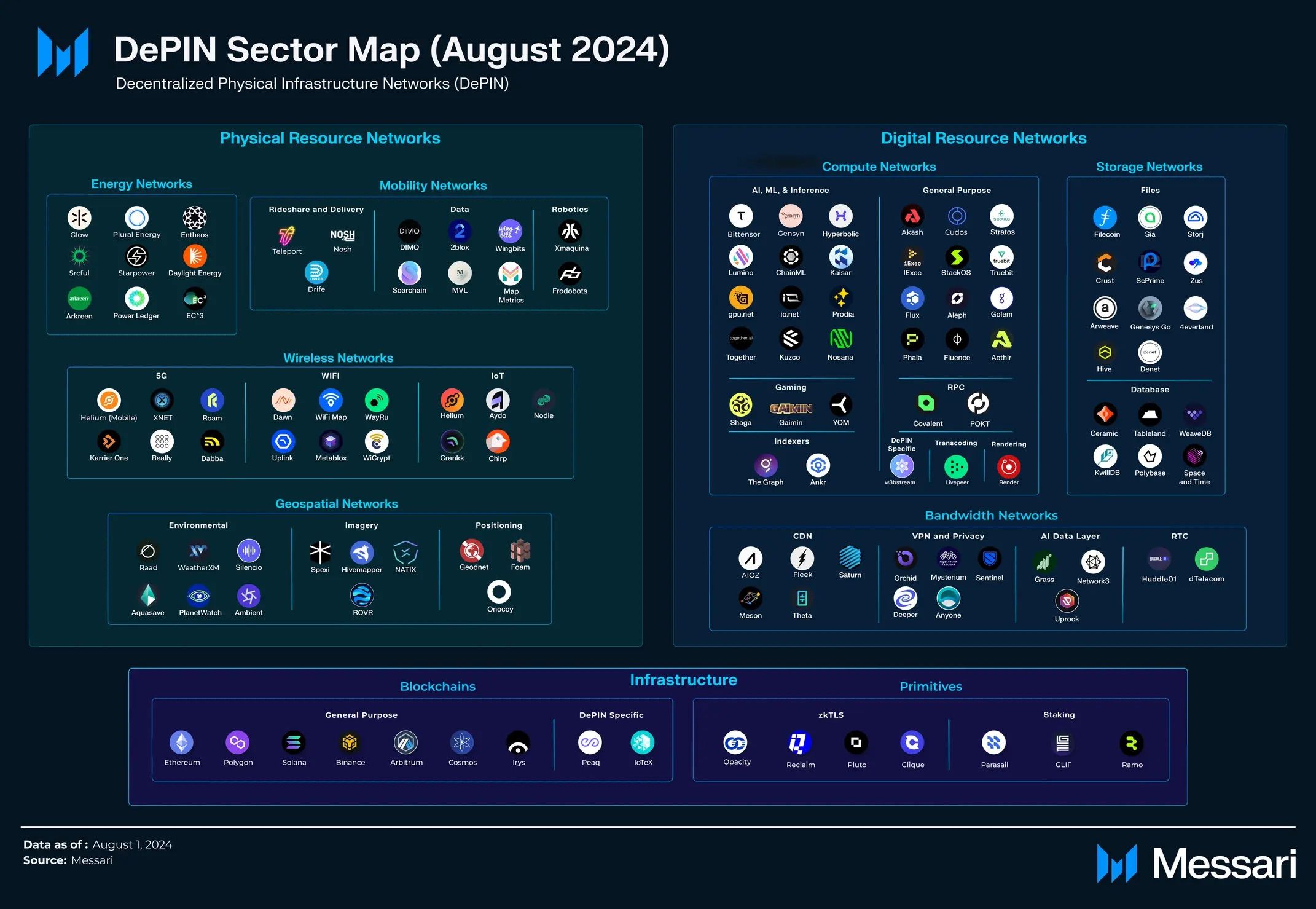DePin’s Parabolic Growth Pushes Market Cap to $20 Billion
 beincrypto.com 08 August 2024 10:43, UTC
beincrypto.com 08 August 2024 10:43, UTC Decentralized Physical Infrastructure Networks (DePin) are transforming the tech sector, evidenced by a 400% increase in market cap to $20 billion over the last year. This growth signifies the rising interest and investment in this field.
Amid the parabolic DePin growth, research firm Messari gave an overview of the ecosystem. It included four new sub-sectors to the DePin sector map and discussed the ecosystem’s revenue challenges.
Messari Introduces 4 New DePin Sub-Sectors
Within DePin, there are two primary categories – the Physical Resources Network (PRN) and the Digital Resources Network (DRN).
Presently, DRNs lead the market with a combined capitalization of $12.2 billion across seven of the top eight protocols. Despite their smaller market cap, PRNs have not been overlooked by investors. Notably, Andreessen Horowitz recently spearheaded a $9 million funding round for the PRN project Daylight Energy.
Read more: What Is DePIN (Decentralized Physical Infrastructure Networks)?
In a report, Messari has broadened its sector map, adding four new DePin sub-sectors. These are:
- Decentralized Gaming Infrastructure (DeGin),
- AI Data Layer,
- Robotics, and
- Manufacturing.
This expansion illustrates the sector’s diverse technological applications, ranging from gaming and AI to robotics and energy management.

The report also suggested that Solana is one of the favorite blockchains for DePin projects. 78 projects are built on the Solana network. Meanwhile, DePin-focused layer-1s like IoTeX and Peaq are also expanding their ecosystems.
“Solana is now home to category leaders like Helium, Hivemapper, and Render (think 3 of the FAANGs of DePin). The integrated infrastructure & developer community of Solana are now attracting DePIN projects at every stage,” A Solana community – Superteam said.
Revenue Challenges
However, despite its impressive growth in market cap, DePin faces significant revenue challenges. According to Messari, while valuations have soared, revenues lag considerably behind, with only four of the largest DePin protocols making it into the top eight by revenue.
This stark contrast points to a market that is still constrained by demand.
Stanley Wu, Senior Investment Manager at HashKey Capital, emphasized that the firm prefers to invest in DePin projects that target lucrative markets. This proves that strong cash flow and revenue are necessary to attract investors’ interest.
“DePin projects should operate in larger markets with the potential for significant cash flow, such as the compute/AI/consumer devices. We analyse the token economics to ensure they support the project’s growth and self-sustainability,” Wu told BeInCrypto.
Read more: How To Invest in Artificial Intelligence (AI) Cryptocurrencies?

Meanwhile, Aethir claims that it achieved $36 million in revenue with a consistent 10% month-over-month growth over the last year. This growth is driven by strong demand for Aethir’s Platform-as-a-Service (PaaS) offerings, which are crucial for developments in AI, cloud gaming, and edge computing.
Despite current challenges, looking to the future, the impact of DePins on technological development is promising. Daniel Wang, Co-Founder of Aethir, shared his optimistic outlook with BeInCrypto.
“In the next five to ten years, DePins have the potential to transform developing countries’ technological landscape. Initially, they can cut infrastructure costs and enhance access to vital services like internet connectivity and digital platforms,” Wang told BeInCrypto.




